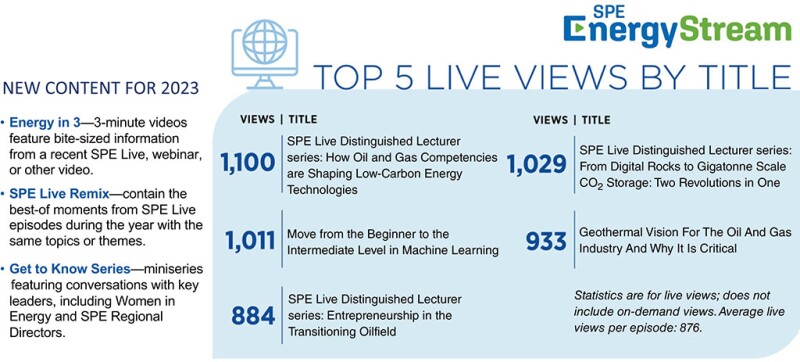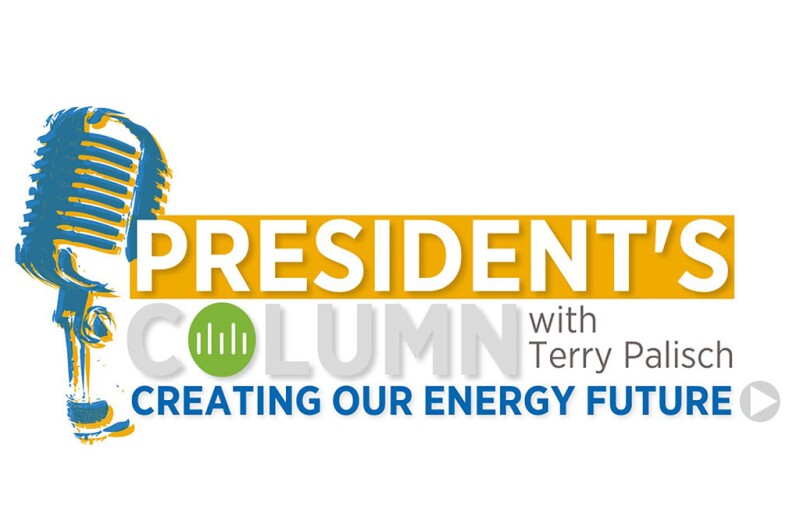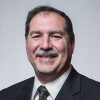Editor’s Note: This month we are introducing a summary of the full transcript. We encourage you to listen to the podcast episode to hear the full conversation on your favorite podcast platform under “The SPE Podcast.”
In this podcast episode, I am joined by Dana Otillio, vice president of marketing and communications at SPE, to discuss how members can maximize their membership by leveraging multimedia content. The episode covers various aspects, including SPE Live, webinars, online training, and the Distinguished Lecturer (DL) Program. The conversation delves into the history and evolution of SPE’s multimedia content and its impact on connecting members globally.
I introduce the episode by highlighting the goal of helping members understand how to get the most out of their SPE membership. As I like to do, I liken an SPE membership to a gym membership, emphasizing the importance of exploring all available offerings to create your energy future.
“Multimedia is now the future … the content helps us run the full gamut of our mission.”
Our discussion delves into the birth of SPE Live during the pandemic, emphasizing its role in overcoming the challenges posed by the inability to hold in-person events. Its success in delivering timely, relevant technical knowledge led to it becoming a series on LinkedIn providing conversational content on global topics.
I also highlight its popularity and mention the addition of Tech Talks, sponsored content sessions that have garnered significant views. To date these have been very popular, streaming four to five SPE Lives a month and garnering 1,600 to 1,700 views live and on-demand per presentation. It’s one of our many growing outlets for multimedia.

Evolution of Multimedia Content
Our discussion then turns to the accessibility of multimedia content through the SPE Energy Stream website, launched in 2022. I describe how it is a one-stop shop for all multimedia content, easily accessible from the spe.org homepage. The website offers webinars, online training, SPE Live, and podcast episodes showcasing the organization’s commitment to providing a comprehensive multimedia experience. I like to think of SPE Energy Stream as the “OnePetro” for multimedia content.
The conversation explores the integration of the DL program with SPE Live, allowing DLs to reach a broader audience through live broadcasts. We take a moment to review the DL program’s significance in connecting with sections worldwide, and the addition of SPE Live as a feature expands the program’s reach.
We distinguish between SPE Live, which focuses on conversational content, and webinars, which are more technical, lasting 60 to 90 minutes. The availability of webinars on-demand and the opportunity to earn continuing education credits are emphasized. Online training courses, both SPE-developed and in partnership with IHRDC, are discussed as more extensive, allowing members to learn at their own pace. In 2019, SPE partnered with IHRDC to link their training content to SPE members. It’s offered through the SPE website and provides a reduced rate for our members.
I believe multimedia is now the future and the content helps us run the full gamut of our mission. It’s not just connecting our members to technology, but it also includes members to members. Multimedia also helps us connect to our external stakeholders as much as anything because we have a lot of external stakeholders that tune into SPE Live and some of the other offerings.
The discussion continues about the development of PetroWiki as a collaborative alternative to the SPE Petroleum Engineering Handbook. Created in response to the popularity of Wikipedia, it allows members to update and add content. I point out that everything in PetroWiki is sourced, unlike ChatGPT where you have no idea where the source came from.
The discussion also raises the question of potential integration with artificial intelligence (AI) tools like large-language models to enhance or complement PetroWiki’s functionality. Overall, there’s an acknowledgment of the platform’s significance and a call for members to contribute and improve its content actively.
Many may not realize that AI has been employed by SPE for many years. It’s the backbone of how we’ve taken our technical content or print content and similar media and made it searchable in our Research Portal. When you go to OnePetro and use the Resource Portal, it’s using AI to find keywords and define the articles that you need.

Maximizing SPE Membership
We wrap up the episode by emphasizing the importance of utilizing the Energy Stream website and highlight various ways members can benefit from it. I encourage exploring webinars, SPE Lives, and staying updated on LinkedIn. Members are urged to identify educational needs and use the webinar library for free technical training. Professionals are advised to attend local section events and consider contributing to PetroWiki. Seasoned professionals are encouraged to participate in SPE Live, host webinars, or apply to become a DL (don’t forget the deadline for DL applications is 15 March).
Finally, we underscore the overall message of how investing in personal and professional development through the various platforms will help create your energy future.
Next Month Sneak Peek
Next month, the conversation will focus on how SPE contributes to improving the industry’s public image, including discussions about the Energy4me program and related initiatives.
In summary, the podcast provides valuable insights into the diverse multimedia offerings of SPE, showcasing the organization’s commitment to connecting, educating, and empowering its members in the dynamic energy industry.


